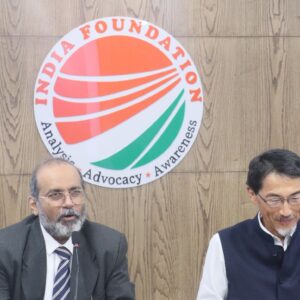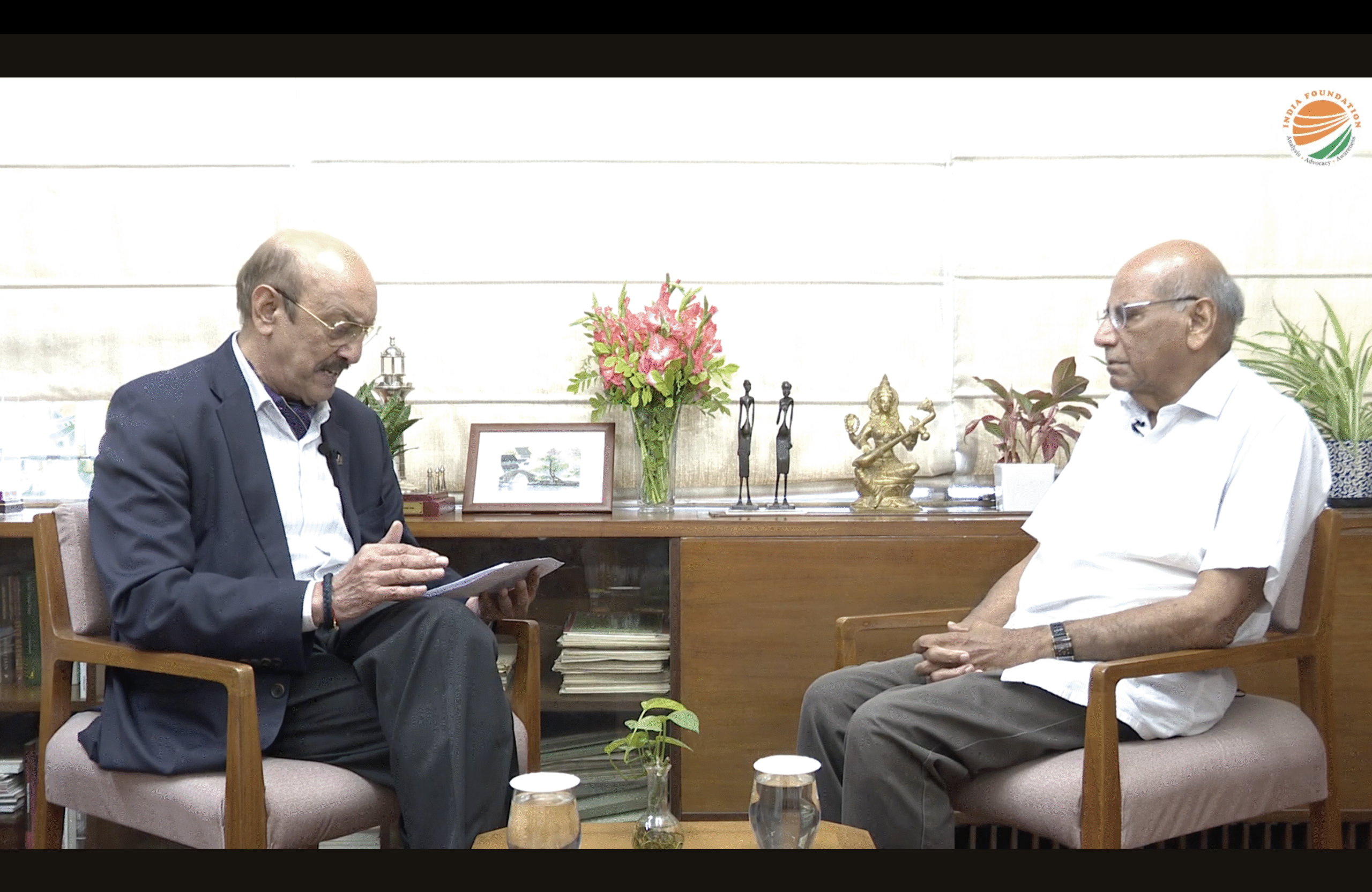Book Review
The book under review is ‘Be Clear, Kashmir will Vote For India’
Jammu & Kashmir 1947-1953,
Reporting the contemporary understanding of the unreported
Author: Raghuvendra Tanwar
Publisher: Manohar
Price: 1695 ( Hardcover)
REVIEWER: Nidhi Bahuguna is Senior Research Fellow Asian Eurasian Human Rights Forum (AEHRF) and is a member of Jammu Kashmir Study Centre (JKSC).
The title grabs attention in the prevailing environment where a small segment of radicalised Kashmiris seek what they term as ‘Azadi,’ with some of them seeking to be part of Pakistan or perhaps a larger Islamic caliphate. The book claiming to report the contemporary understanding of the unreported is a deep, exhaustive and highly analytical study of a large volume of documents, first-hand sources, letters, news reports, magazines- some of which are now no longer in print,numerous publication, brochures and government reports. The book encompasses a wide body of research, put together in a brilliant narration by the author, who is Professor Emeritus at Kurukshetra University and a renowned teacher.
Prof Tanwar has, in the preface itself, put forth his personal experiences of Kashmir, which he found to conflict with the prevailing accepted theories. In the introduction to his book, he overviews the vast body of studies, books, reports, newspapers etc which over the years have been devoted to the Kashmir issue. Unsurprisingly, a vast body of this work propagates a Pakistan-centric point of view, which in turn has been a fall out of the popular British view—a point of view that was geared towards securing the British national interest.The phase stretching from 1947-1953 from any other perspective is “hitherto over sighted”.
The first chapter gives a brief overview of the history of Kashmir, touching upon its interwoven society, the poverty of the local populace and the geo-strategic importance of the state which underpinned British interest in the region. The chapter analyses the political scene that prevailed in 1947 and the response of Nehru on the Kashmir issues. The roles of Maharaja Hari Singh, Sheikh Abdullah, Lord Mountbatten, the Muslim League and the Kashmiri Pandits are analysed in the light of the partition. The details from the visit of Acharya Kripalani, often neglected, make for interesting reading.
The tribal invasion of the state has not received much coverage in India but finds deep resonance in the book, which has a chapter on the subject. The various issues and the sources Professor Tanwar has put across make for a captivating read. These historical details point the lie in the false narrative that has been spewed out—a narrative that states that the invasion by the tribal marauders was spontaneous and triggered by high taxation of Muslim subjects in Poonch; that Maharaja Hari Singh was bullied into acceding to India and that it was not the desire of the common Kashmiri to accede to India. All this is countered through cogent and painstaking research which methodically demolishes the web of lies which have gone into weaving a false narrative for reasons that need to be determined. The picture that emerges from the research carried out by the author is of India being taken by surprise; of a collapsed administration not heeding to intelligence inputs of an impending attack; of senior officials in the Hari Singh administration being in cahoots with Pakistan and of attempts to incite the Muslims of Kashmir against the Maharaja,in the hope that they would support the invaders. The article by K.R. Palta, cited at length, gives first-hand reports on Pakistani involvement and makes for an engrossing read. The invasion failed from the Pakistani viewpoint and ‘Fortified Hindu-Muslim Relations’. The inhuman behaviour of the invaders which has never been discussed is dealt with at length, quoting first-hand sources and reports, which should be made public again to make the new generations aware of the reality of invasion.
The chapter dealing with Nehru putting Abdullah in charge analyses the beginnings of the political whirlpool of follies. The forgotten opposition of many field officers like Sir Evan Jenkins, the Governor of Punjab, who believed that partition on religious grounds was a mistake has been discussed. The events of the weeks following the invasion, the miscalculations and misjudgements of Nehru and the larger Indian leadership have been discussed at length. News reports from leading papers like Tribune offer insights about the reaction of ordinary Kashmiris which have never been discussed in the debate on Kashmir. The insights of Mr Jagmohan, twice governor of the state, have been given due space.
The relation of Abdullah with Sardar Patel offers very interesting insights. The analysis of Nehru taking to the idea of the plebiscite is dealt with in detail. The various studies accessed by the author bring out very interesting details like the issue of plebiscite never being of much importance at the time of accession. The idea was planted by the leaders, mainly Abdullah and taken up by Nehru and Gandhi. The various versions of why Nehru took a fancy to plebiscite will go a long way in dealing with this issue at present.
The book also analyses the role of the UN in minute detail, bringing out many facets which had till now been kept out of public gaze. The misjudgment of Nehru is evident in the speech he made in Parliament, the consequences of which are still being dealt with by the nation. The mistake Nehru made in making Kashmir into an international issue, the reasons Nehru went to UN, the geopolitical interests of the Western world and the consequence of this move are covered in depth in the chapter titled‘Pilgrimage of Hindustan to Lake Success (UN) the hotbed of international intrigue’. The cartoons of that time, collected by the author, are indeed fascinating and bring to fore the prevailing sentiment and the depth of this Nehruvian blunder.
The rolesof The PrajaParishad, and SP Mookerjee, and their relation with Nehru and Abdullah have been often relegated to the dark bins of history. The Chapter ‘Accession still in the Melting Pot’ brings to light many forgotten reports and incidents. The issue of Pakistan claiming Rs 55 crore from India has somehow always escaped public attention, as is the role of GopalaswamiIyengar in the whole situation. The maligning of Praja Parishad by Abdullah has never been contested. The book brings forth hidden reports and forgotten publications that bring out the real picture of the Praja Parishad. The booklet published by Bhaskaranand, cited in parts, makes for compelling reading. The letters exchanged between Nehru, Mookerjee and Abdullah give a very clear picture of the events and the various stands prevailing at that time.
The dismissal of Sheikh Abdullah by Nehru is often considered a watershed moment in Kashmiri politics, but oft-forgotten is the death of SP Mukherjee that preceded the dismissal by a couple of months. The narrative established of the dismissal is that of ‘communal elements’ (Praja Parishad) taking control of the decision making bodies in New Delhi. The various letters, news reports give an interesting perspective, especially the letter was written by Indira Gandhi to Nehru expressing sadness on the events in Kashmir. The various reactions to the dismissal offer a clearer picture. While some reactions have been in the public eye, it is the forgotten ones, like those of Mridula Sarabhai that offer valuable insights. Another forgotten issue in India is the possibility of a partition of Kashmir proposed by Nehru in a letter written to BakshiGhulam. The minutes of Nehru-Mohammed Ali meeting requires deep reading as they bring out how a non-issue like a plebiscite became the central issue in the Indo-Pak talks on Kashmir.
As we go through the book, it is difficult not to agree with the author that the ‘Kashmir problem’ in “its most basic form is that in 1947, Kashmir was not only a Muslim majority state but also had a contiguous border with Muslim majority Pakistan …’
To come back to the title, in the introduction, the author cites an article dated 26 October 1949 by K.A Abbas, published in ‘Current’ Magazine stating “…let us be clear, Kashmir will vote for India…’ Raghuvendra Tanwar has successfully established this fact in his book, by laying outhistorical documents, reports and studies which have been consigned to ill-maintained archives.
The book is suggested for all who wish to gain insights into the Kashmir problem beyond the purported facts by a Western-centric media. The Government can perhaps take the initiative to publish the studies and reports cited in the book, to make them available to the general public, to foster a climate of a broader understanding of its historical trajectory. While the book deals with just six years—1947-1953, it would indeed be excellent if Professor Raghuvendra Tanwar could look into the events of 1931 and bring out another publication on the same.



